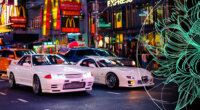If you’re feeling overwhelmed learning about all the different types of car insurance, know that you’re not alone. There are many types of vehicle insurance – and the laws, maximum levels of coverage, and definitions can vary from state to state.
What’s the difference between collision and comprehensive? How does personal injury protection differ from medical payments coverage? Why would you need uninsured motorist coverage? And which state doesn’t require you to purchase any form of car insurance whatsoever? How Much Does Auto Insurance Cost in United States?
To make it all easier to understand (and to save you the trouble of having to consult multiple sources), we produced this useful guide to the main types of vehicle insurance, complete with examples of which states mandate which forms of insurance (see New Trends on the US Auto Insurance Market).
Types of Car Insurance in the U.S.

1. Liability
When car insurance companies speak of liability coverage, they are actually referring to two types of coverage: bodily injury (BI) liability and property damage (PD) liability. BI covers expenses for injuries you cause to someone else. PD covers expenses for damage you cause to someone else’s vehicle or property (such as a fence).
2. Collision
Collision is the opposite of property damage liability, in that it covers you when your property is damaged or destroyed in an accident with another vehicle or object (such as a fence or pole). Collision coverage is always optional from a legal point of view, although some loans or leasing companies may require that you purchase it as a condition of your contract (see U.S. Auto Insurance Performance & Underwriting Results).
3. Comprehensive
Known as “comp” for short, comprehensive coverage covers expenses not caused by collisions. This generally includes theft, vandalism, fire, natural disasters, falling objects, or hitting an animal. Comp coverage is generally more expensive than collision coverage. It is always optional from a legal point of view, but as with collision coverage, some loans or leasing companies may require that you purchase comprehensive coverage.
4. Personal Injury Protection (PIP)
The exact definition of personal injury protection varies slightly depending on the state and insurance company. As a general rule, PIP covers a wide range of medical and non-medical expenses when the policy holder is injured in an accident. PIP is mandatory in a handful of states, including New York, New Jersey, Massachusetts, Florida, Michigan, Kentucky, Kansas, Minnesota, Oregon, Utah, and Hawaii.
5. Medical Payments Coverage
Medical Payments (Med Pay) coverage offers narrower coverage than personal injury protection, and is not mandated by any states. Most insurers offer medical payments as an alternative to PIP, meaning they won’t allow you to purchase both.
6. Uninsured Motorist / Under-insured Motorist
One of the realities of driving in a country with more than 220 million other licensed drivers is that some of them don’t carry car insurance – even when it is against the law. To protect your vehicle from damage caused by uninsured or under-insured drivers (or hit-and-runs), insurance companies offer a cheap add-on to your regular insurance: uninsured motorist / under-insured motorist coverage. Uninsured / under-insured motorist coverage is mandatory in 15 states, and optional everywhere else.
What if I Need More Protection on the Road?

Emergency roadside assistance
Most car insurance providers offer emergency assistance as a voluntary add-on to the basic forms of coverage. The insurance provider teams up with a network of partners who provide coverage when your vehicle breaks down. Assistance generally covers, towing, flat tire, jump-start, fuel delivery, locksmith, and emergency extrication of your vehicle if it gets stuck.
Gap coverage
This is an optional form of coverage on most vehicle insurance policies that has become more popular as car prices have risen. It pays out the difference between the money you owe on your car and what the car is worth at the time of an accident. Loan/lease coverage is similar to gap coverage, in that it covers drivers who have leased contracts (see Global Car Insurance Market Outlook).
Ride-sharing or ride-hailing coverage
A product of the sharing economy, this type of coverage insures drives who work for ride-sharing companies like Uber, Lyft, and Sidecar. It generally only applies when the driver has passengers in their vehicle.
Classic car insurance
Covers expensive vehicles such as vintage, classic, collector, and antique cars. Policy holders are generally required to park the vehicle in a garage (rather than on the street), to use it as a secondary vehicle (rather than using it to get to and from work) and to keep it in good working condition (see Who Should Be Listed on Car Insurance Policy?).
Rental Reimbursement
Covers the cost of hiring a rental car when your vehicle is in the shop as a result of an accident.
Custom Parts or Equipment Coverage
Covers the cost of replacing damaged or stolen equipment such as stereo systems or rims. Generally applies to any equipment added to the vehicle by the policy holder, as opposed to equipment built into the vehicle by the manufacturer.
………………………..









